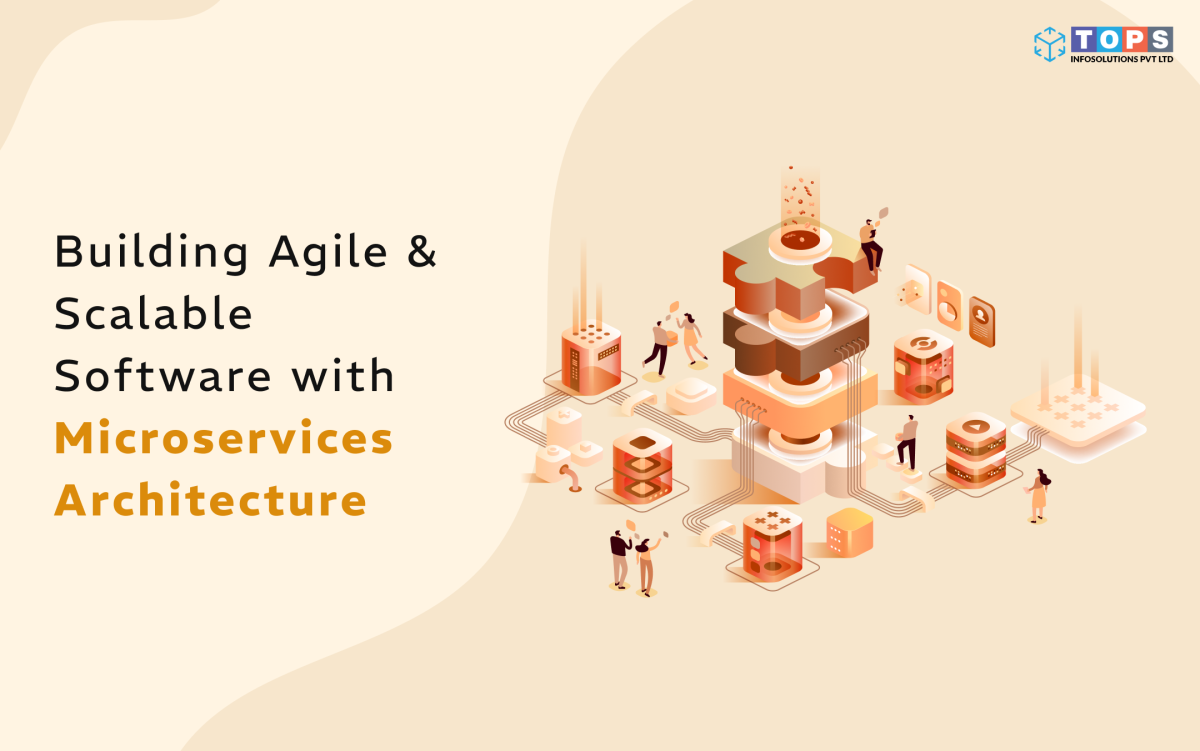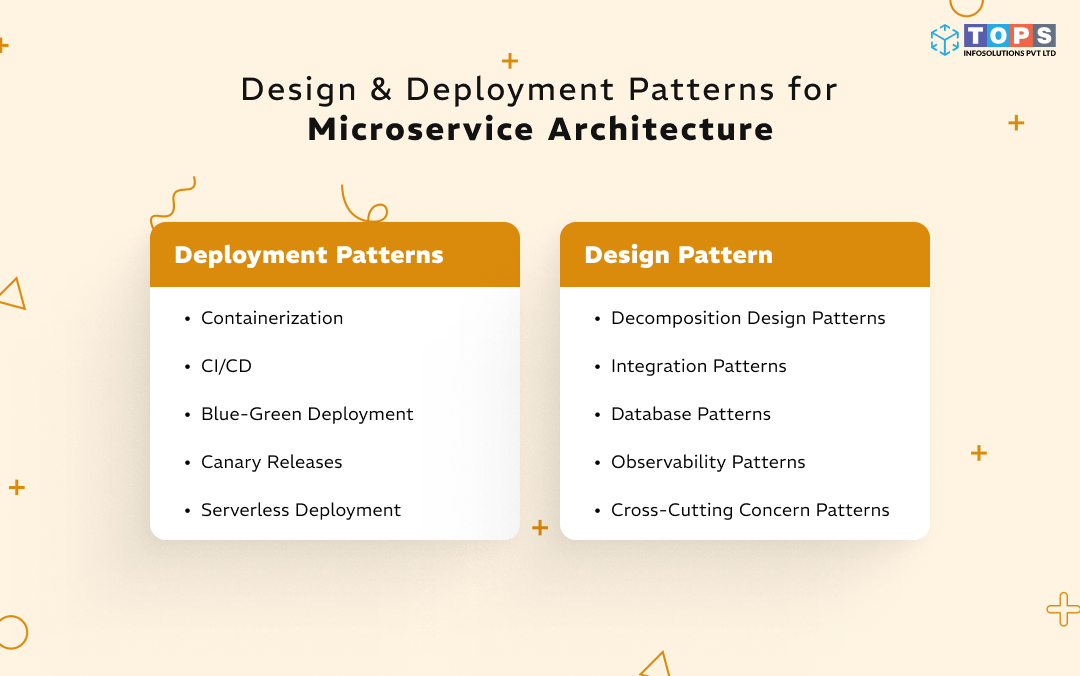Table of Contents
Microservice Architecture for scalability and agility in software development

Robust and scalable software development dominates the competitive space, and the choice of architecture significantly impacts the efficiency, scalability, and deployment of the software. Hence, there is a relentless quest for architecture that meets the current development needs and helps anticipate future growth. Modern software development with microservices is one such trend that’s changing the strategis and ways for the software development capabilities.
Traditionally, the development relied on monolithic architecture that closely coupled the application components into a single codebase. With the increasing complexities of app development, this approach fails to deliver the results. Microservice architecture overcomes this issue and redraws the boundaries of software development capabilities in terms of agility, scalability, maintainability, and more.
To overcome the challenges, and enticed by the advantages of using microservice architecture, most software development companies are adopting this modular approach as unlike monolithic, it divides the complex app into smaller, independently deployable services. Each service is focused on a specific functionality, making the entire development process more simple and flexible.
This blog post will help you understand microservice architecture, compare it with the monolithic approach, scaling and deployment strategies of Microservice architecture, its advantages, challenges, and more.
Microservice Architecture: Simplifying Complex Software Development
Microservice architecture overcomes the limitations of traditional monolithic architecture and emerged as a revolutionary paradigm in the software development domain. It proposes a breakdown of complex app structures into smaller, more manageable microservices, where each of them can be developed, deployed, and scaled independently. Despite the independent development, each microservice works cohesively, forming a larger and fully-fledged complex software system.
The independent microservices are coupled together through lightweight APIs like REST. This modular approach allows for better management of software development and maintenance, promoting adaptability and agility for the changing business requirements and market trends.
Microservice architecture rigidly works on these core principles:

Loosely Coupled with High Cohesion
Each smaller service operates independently, and hence, modifications in any of the features of the service do not impact the entire software.
Decentralized Data Management
As each microservice is developed independently, instead of a single database, there are different databases for each service for efficiency and scalability.
API-Based Communication
The communication between the microservices is established through lightweight protocols such as REST, gRPS or messaging queues.
Faster & Automated Deployment
It is one of the best practices of DevOps in Microservice architecture. With the CI/CD (continuous integration/continuous deployment) approach, the microservice architecture allows frequent and seamless pipeline updates.
Fault Tolerance and Resilience
As the entire software is not deployed as a single codebase, if one service fails, it does not cause the entire software to crash.
Agility & Deployment
This modular approach promotes an agile development approach with the independent development of each software component. Following CI/CD method, each component is tested, updated, and deployed without waiting for the entire release and deployment.
Read More: Role of Agile Methodology in Building Mobile Apps
A survey done by Statista states that around 85% of large enterprises have claimed to utilize microservice architecture within their software development process. This widespread adoption highlights the effectiveness of microservice architecture in modern software development.
Microservice Architecture VS Monolithic Architecture: Comparative Analysis
Microservice architecture adds new capabilities to the software development process, rendering better resource utilization and an agile development approach. Though the benefits of the microservice architecture can be better understood, knowing the shortcomings of the traditional approach, Monolithic architecture.
Monolithic architecture follows a straightforward approach with a single, indivisible unit development with all the software components tightly coupled and run as a single service. This architecture is known for its simplicity in developing, testing, deploying, and scaling the entire complex system as a single unit. However, this turns into rigidity and complexity for scaling any specific functionality, adopting new technologies, or making any significant changes.
Whereas with the microservice architecture, the complex app is divided into an independent suite of smaller services. Each microservice is responsible for its process and communicates with lightweight API mechanisms such as HTTP API (REST, gRPC, etc). Every microservice is built around the business capabilities and can be deployed independently following an automated deployment strategy.
Let’s discuss in detail how this fundamental difference impacts the overall software development process significantly.
| Feature | Microservice Architecture | Monolithic Architecture |
|---|---|---|
| Codebase | Multiple independent codebase. | Single, Large codebase. |
| Deployment | Independent service deployment. | Requires deployment in one go for the entire software. |
| Scalability | Easily scalable without affecting the entire functionality of the software. | Due to high dependency and a single codebase, scaling is difficult. |
| Failure Impact | Any issue or failure in a functionality does not affect the other or software as a whole. | Failure in one module can result in the entire software crash. |
| Tech Stack Flexibility | As each microservice is developed independently, there is tech stack flexibility. | Limited to a single tech stack for the entire development. |
| Development Speed | Parallel development of multiple microservices, faster development. | Slower development due to dependencies. |
How Microservice Architecture Simplifies Scaling & Deployment?
Monolithic architecture imposes a set of challenges when it comes to scaling the software or bringing agility to the development process. A single change or update requires redeploying the entire software. It is difficult to scale a single component, all the components need to be scaled together, creating a high failure risk due to dependency.
But with microservice architecture all these challenges are addressed effectively. From scaling the software capabilities to adapting to technological updates, everything is effectively possible with Microservice architecture. Here’s how microservice architecture simplifies deployment and scaling:
Scaling with Microservice Architecture
Efficient and risk-free software scaling is the cornerstone of the microservice architecture.
Component-Level Scaling
With independent development and deployment of each software component, the microservice architecture allows component-level scaling without affecting the software as a whole. Only the service or functionality experiencing high demand can be scaled independently leading to efficient resource utilization and cost saving.
Horizontal Scaling VS Vertical Scaling
Microservice architecture backs the horizontal scaling method where the load is distributed across multiple instances in contrast with the vertical scaling where all the resources are added to a single server. Horizontal scaling facilitates the capacity of higher load handling, more flexibility, and resilience within the process.
Load Balancing & Traffic Management
To manage the high-end software traffic distribution, tools like Kubernetes, API gateways, service meshes, etc are used. User requests are effectively distributed across service instances to prevent a high load on any single instance.
Automated scaling with Cloud
The microservice architecture employs cloud platforms that offer auto-scaling features such as AWS, Azure, Google Cloud, etc. Based on the real-time demand, this automatically adjusts the number of service instances for optimal performance and agility within the software development process.
Microservice Deployment Strategies and Design Patterns
Splitting applications into smaller units requires a systematic design and deployment patterns to be followed. Deployment patterns is a technique for updating the software components, which includes:

Deployment Patterns
- Containerization
- CI/CD
- Blue-Green Deployment
- Canary Releases
- Serverless Deployment
Microservice Design Pattern:
Along with a set of benefits, Microservice architecture also have a fair set of challenges which needs to addressed with though-out design patterns to effectively build microservice architecture:
1. Decomposition Design Patterns
- Decompose by Business Capability
- Decompose by Subdomain
- Strangler Pattern
2. Integration Patterns
- API Gateway
- Aggregator Pattern
- Client-Side UI Composition
3. Database Patterns
- Database Per Service
- CQRS
- Saga Pattern
4. Observability Patterns
5. Cross-Cutting Concern Patterns
- Circuit Breaker
- Service Discovery
- Blue-Green Deployments
Challenges with Microservice Architecture Implementation
Along with many benefits and advancements within the software development approach, microservice architecture also has challenges that hampers the progress.
- Design Complexity
- Data Consistency
- Testing & Monitoring
- Debugging Issues
- Compromised Security
- Increased Operational Complexity
- Inter-Service Communication Breakdown
- Maintenance of Microservices
- Network Management
Faster & Agile software deployment with Microservice Architecture
Microservice architecture has introduced a simpler and more agile way of development, making software deployment and scaling easier. Businesses can achieve agility, efficiency, and resilience with Microservice architecture as it enables independent services, API-driven communication, and CI/CD deployment methods. Many leading tech giants have already employed this mechanism within their software development process.
At Tops Infosolutions, we aim for scalable and competent software development with microservice architecture as the prime strategy. With our expertise in designing modular architecture, we focus on:
- Rapid Deployment
- Scalable Infrastructure
- Agile Development
